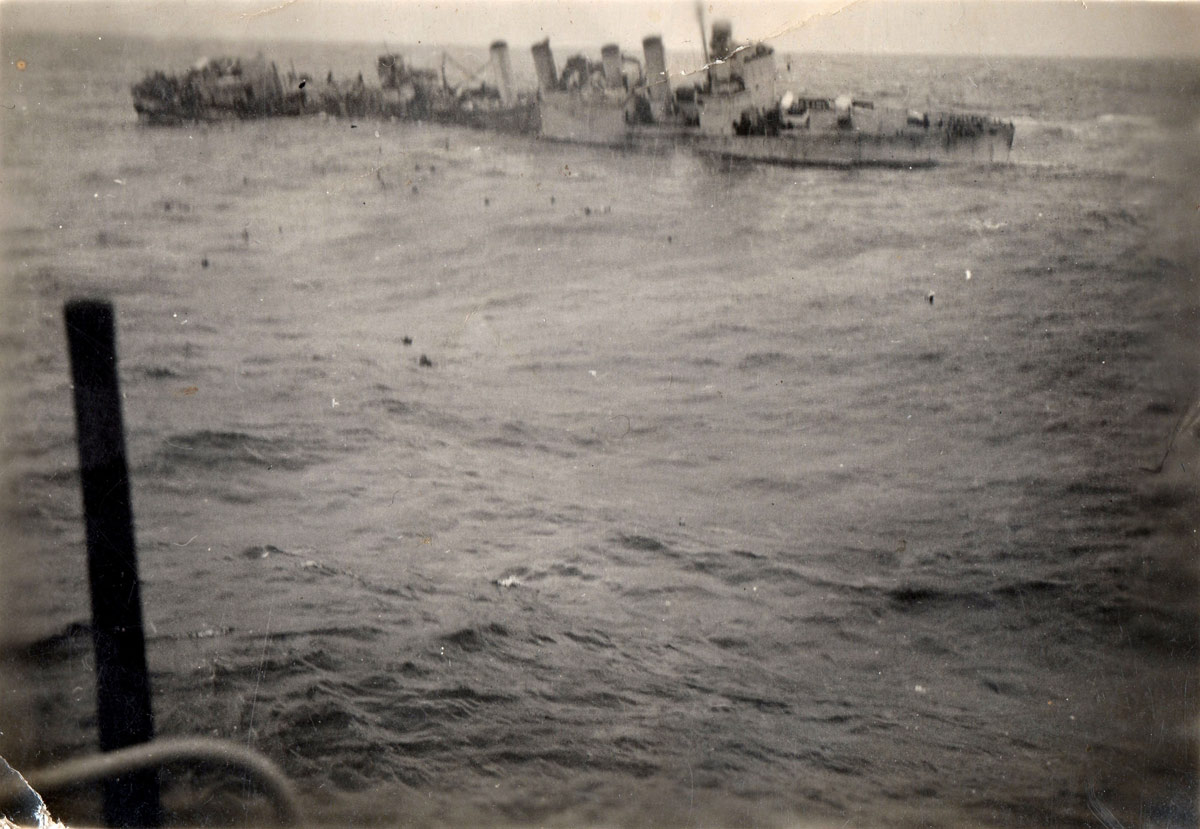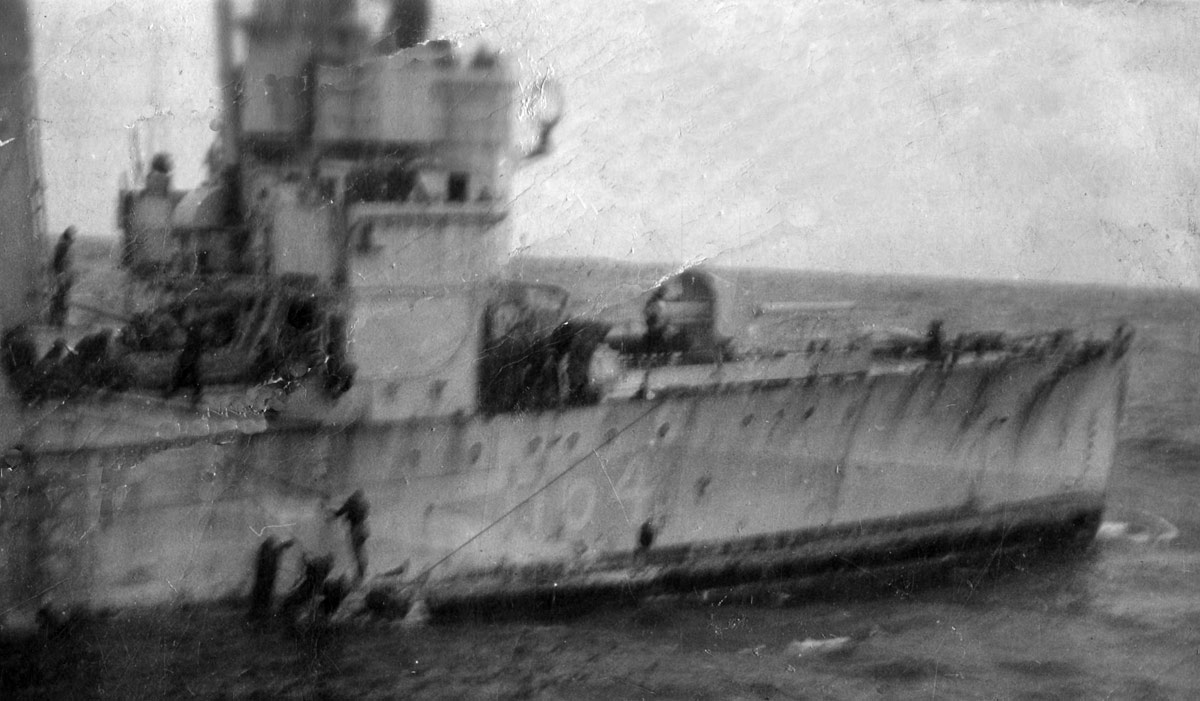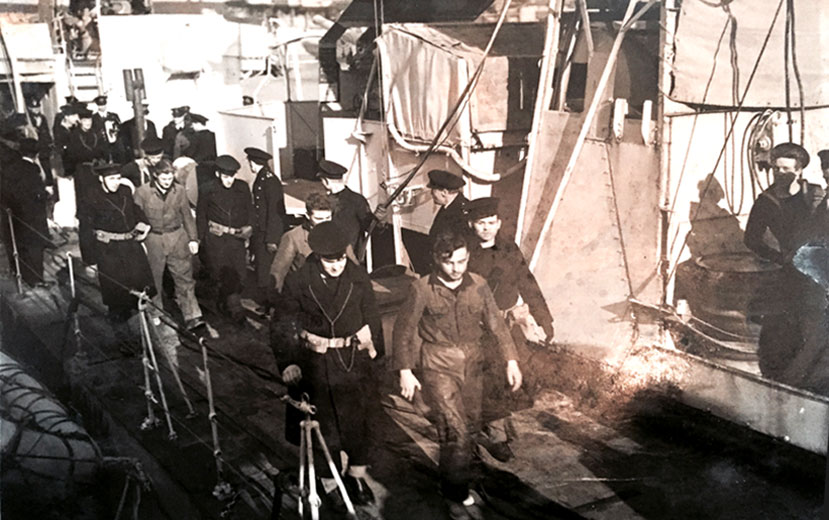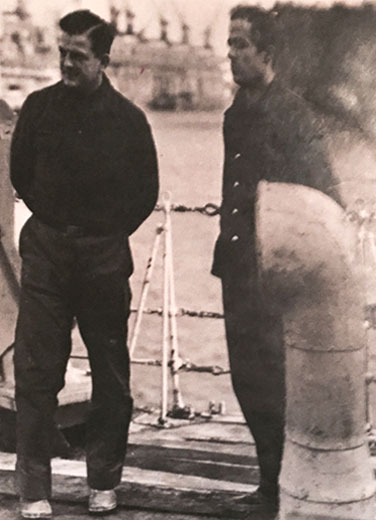Lt.Cdr. Richard Been Stannard, VC, RD, RNR
Lt.Cdr. Richard Been Stannard, VC, RD, RNR had succeeded de Chair as CO of HMS Vimy on 1 Dec 1942 and briefly describes her part in the sinking of U-187 on 4 February 1943 below:
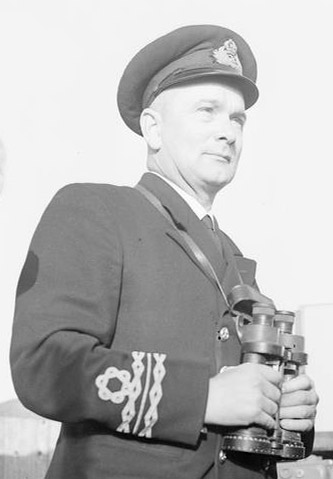
"It
is only the odd spot of hectic excitement lasting a few hours that
keeps the small ships going. Life at sea for destroyers and corvettes
in the Western Ocean means day after day of monotony, foul weather,
rain, hail and intervals of fog and ice. It may depend on a few
minutes of action whether we get the chance of a kill or not.
Our latest spot of excitement started at eleven o’clock in the morning when our sister destroyer
Beverley
reported “Submarine in sight bearing 037 degrees, 7 miles. We were
about three miles astern at this time and what a glorious feeling it
was as full speed ahead was ordered, and the ship leapt forward. There
was a moderate sea, and spray was coming over the fo’csle and B Gun. At
about 1130 we came abreast of our sister destroyer and at that moment
we saw the U Boat submerge about four to five miles ahead.
Both destroyers kept at full speed until we reached the approximate
position where the submarine was last seen. Then we reduced speed and
dropped smoke floats to mark the area, and afterwards we proceeded to
carry out an underwater search. In quite a short time we found the
submarine, and
Beverley
stood by while we went in to attack with depth charges. By this time of
course we were at action stations, and our ship shuddered time and
again as depth charges exploded beneath the surface. A few minutes
later came the moment for which we had waited long months. The U
Boat surfaced astern of us breaking the sea surface at an angle of
about sixty degrees. A great cry went out from the crew “there she is!”
Soon shells were bursting all round the submarine as she leveled off on
the surface. By this time we had increased to full speed and the ship
was listing over as she came round with helm hard over to starboard.
[NB, she would be listing outwards to port FD]. Now B Gun, which was
forward just below the bridge received the order to open fire. The
noise was deafening, with the regular bark of the main armament, and
the constant stutter of our 20 milli-metre machine guns, the latter
used mainly for preventing the enemy crew from manning their guns. It
seemed hours but it was only a matter of seconds before we were heading
straight for the U Boat. As we drew near, we could see some of the crew
jumping into the water, and this was the first indication we had that
the U Boat had been damaged.
I didn’t give the order to cease fire in case she tried to get away.
When we were about 500 yards off, the U Boat seemed suddenly to stand
on end, with about a hundred feet of her forward part vertical. We then
saw one salvo from B Gun smack straight into her. By this time her crew
were 150 yards away from the sinking ship. I gave the order “cease
fire” as she sank slowly below the below the surface. The next orders
were “out Scrambling nets, away seaboats, and prepare to save
prisoners”.
Slowly we crept up the where the bobbing heads were gathered.
Beverley
was by this time carrying on with the rescue work, and we signaled
“Don’t be greedy, leave us a few”. Only one signal was sent to the
Senior Officer who was shepherding the convoy away from this once
dangerous spot – “Got Him!” – that was all. He understood.
Two of the German Petty Officers were berthed in the Engine Room
Artificers’ Mess, and we were amused to hear that about 2 am two days
later, when Action Stations were sounded off, one of the ERAs didn’t
hear the alarm gong. One of the prisoners, who spoke English, leapt out
of his bunk and shook the sleeping ERA saying urgently “You go,
sink sub, else much trouble”, meaning that this particular ERA would
get into trouble if he didn’t get to his action station."
Peter McQuade remembred his Grandfather, AB Albert Ludlow, describing how:
"They lowered their nets and Germans
were climbing aboard. He pulled a, "Massive Ginger haired
Mountain of a man" into the ship. Everyone was shocked how big he
was! A few minutes later they pulled another man, who was like an
identical twin to the Man Mountain from a few minutes earlier. As
Granddad looked behind him, the Poles who were serving aboard Vimy
were throwing the Germans back into the sea on the other side of the
ship. So it wasn't actually "twins" but the same man they had
pulled from the sea twice."

 HMS VIMY
HMS VIMY "It
is only the odd spot of hectic excitement lasting a few hours that
keeps the small ships going. Life at sea for destroyers and corvettes
in the Western Ocean means day after day of monotony, foul weather,
rain, hail and intervals of fog and ice. It may depend on a few
minutes of action whether we get the chance of a kill or not.
"It
is only the odd spot of hectic excitement lasting a few hours that
keeps the small ships going. Life at sea for destroyers and corvettes
in the Western Ocean means day after day of monotony, foul weather,
rain, hail and intervals of fog and ice. It may depend on a few
minutes of action whether we get the chance of a kill or not.